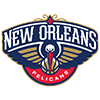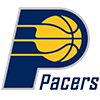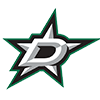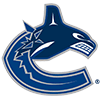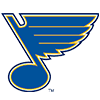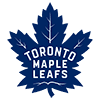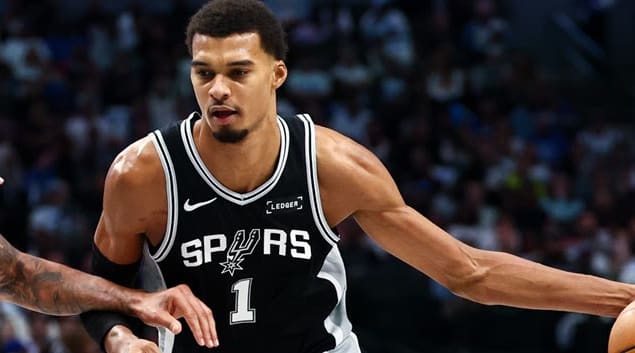Larry Sanders and J.R. Smith
Two players suffered facial fractures just prior to the break but face very different recoveries. Sanders suffered a fractured orbital bone following an inadvertent elbow from Houston's James Harden, while Smith broke his left zygomatic bone (cheekbone) after falling into the knee of OKC's Kevin Durant.
The human skull is separated into two parts, the neurocranium that surrounds and protects the brain, and the facial skeleton. The bones of the face protect the eyes, nose, and mouth, but are surprisingly fragile. The most common fractured part of the facial skeleton is the nasal bone. However, another area of the face, the orbit, is also susceptible to injury. The orbit, better known as the eye socket, consists of seven bones from both the neurocranium and the facial skeleton, including the maxilla (the upper jaw), the frontal bone, and the cheekbone. Fractures to one of these bones generally occur following direct contact, particularly the vulnerable orbital floor.
The severity of the injury depends on multiple factors, including location and size of the break, any soft tissue or muscle involvement, and whether or not the bone is displaced. Surgery is often warranted if there is bone displacement or significant damage to the eye itself. Recovery time appears directly connected to whether or not surgical treatment was required. The last eight NBA players to suffer facial fractures that did not require surgical intervention missed an average of 1.8 games. By comparison, those players that needed surgery following
Larry Sanders and J.R. Smith
Two players suffered facial fractures just prior to the break but face very different recoveries. Sanders suffered a fractured orbital bone following an inadvertent elbow from Houston's James Harden, while Smith broke his left zygomatic bone (cheekbone) after falling into the knee of OKC's Kevin Durant.
The human skull is separated into two parts, the neurocranium that surrounds and protects the brain, and the facial skeleton. The bones of the face protect the eyes, nose, and mouth, but are surprisingly fragile. The most common fractured part of the facial skeleton is the nasal bone. However, another area of the face, the orbit, is also susceptible to injury. The orbit, better known as the eye socket, consists of seven bones from both the neurocranium and the facial skeleton, including the maxilla (the upper jaw), the frontal bone, and the cheekbone. Fractures to one of these bones generally occur following direct contact, particularly the vulnerable orbital floor.
The severity of the injury depends on multiple factors, including location and size of the break, any soft tissue or muscle involvement, and whether or not the bone is displaced. Surgery is often warranted if there is bone displacement or significant damage to the eye itself. Recovery time appears directly connected to whether or not surgical treatment was required. The last eight NBA players to suffer facial fractures that did not require surgical intervention missed an average of 1.8 games. By comparison, those players that needed surgery following a facial fracture missed a minimum of five games and an average of 12 games.
Sanders fracture was more significant and required surgery. The Bucks estimate he will miss a minimum of six weeks, hinting the break was very extensive and likely a blowout fracture to the orbital floor. His early reports of double vision also suggest eye involvement. For fantasy purposes, he becomes a droppable player in most formats as he will miss the remainder of the fantasy regular season. Owners with some flex room on their roster may consider stashing him but it seems unlikely he will be a contributor for the remainder of the year.
Smith was much luckier and will return to the court Tuesday in Memphis. His cheekbone fracture will not require surgery but will force him to wear a protective mask. His first attempt at wearing the mask went poorly as he missed New York's last game before the break because it didn't fit properly. He has been refitted for a new mask, but he will need time to adjust to it. Players wearing facemasks often complain of it being irritating and don't like how sweat accumulates underneath it. Don't anticipate the mask stopping Smith from hoisting jumpers but understand his accuracy may be off as he grows comfortable with his new gear.
Dwyane Wade
Wade missed Miami's final two games leading into the All-Star break with two different ailments. A migraine headache cost him a game against the Suns, while a condition known as drop foot forced him out against the Warriors. The migraines aren't alarming as Wade has dealt with them throughout his career. However, the drop foot does raise another red flag for the often-injured guard.
Drop foot occurs when the front part of the foot uncontrollably drops during movement. It is often caused by weakness to the musculature of the leg and foot following a problem with the common peroneal nerve. It is a symptom that usually suggests an underlying issue and the Heat medical staff would be wise to thoroughly investigate the problem.
Wade managed to start and play in Sunday's All-Star game, a good sign that Miami isn't overly concerned with the appearance of the condition. However, Wade has been a headache for fantasy owners all season and this only elevates his already high level of associated risk.
Fast Breaks
Kobe Bryant: Bryant did not dress for the All-Star game and admitted his recovery from a fractured tibia has gone slower than he anticipated. His knee will be reevaluated coming out of the break and it's hoped that a more definitive timeline can be established. Kobe has been limited to non-weight bearing exercises up to this point, suggesting he is still several weeks away from taking the court for games. With plenty of other Lakers out with injuries, players like Wesley Johnson, Chris Kaman, and Steve Blake will continue to see a large dose of minutes.
DeMarcus Cousins: Cousins entered the break nursing a strained left hip flexor. The team has not provided an update on his status but should provide an update sometime before their game against the Warriors on Wednesday. Cousins did attempt to down play the severity of the injury and hopefully the extended time off will allow him to play.
Marc Gasol: It appears Gasol avoided a second serious injury to his knee after a recent MRI revealed no structural damage. The reigning Defensive Player of the Year missed 23 games earlier in the season with a Grade 2 MCL sprain and limped off the court during the team's recent game against the Magic. It appeared he had at least aggravated the initial injury, but subsequent testing proved otherwise. He could play as early as Wednesday and, like Cousins, likely benefited from the extra days off.
JaVale McGee: McGee is expected to make a decision about surgery on his fractured leg by the first of March. The Denver center has missed 46 games with a stress fracture in his tibia and has seen little signs of improvement in rehab. Surgery would end his season but at least provide closure for fantasy owners still clinging onto hope.
Russell Westbrook: Oklahoma City is hoping that their All-Star guard returns Thursday against the Heat. Westbrook has missed 27 straight games recovering from his third knee surgery in less than a year. The initial surgery was to repair a torn meniscus and the second was to fix a suture that was causing irritation. The most recent procedure was carried out after additional inflammation persisted. Expect the Thunder to ease him back into the rotation and limit his minutes in his first few games. He remains a must-start but his level of risk will continue to be high.









